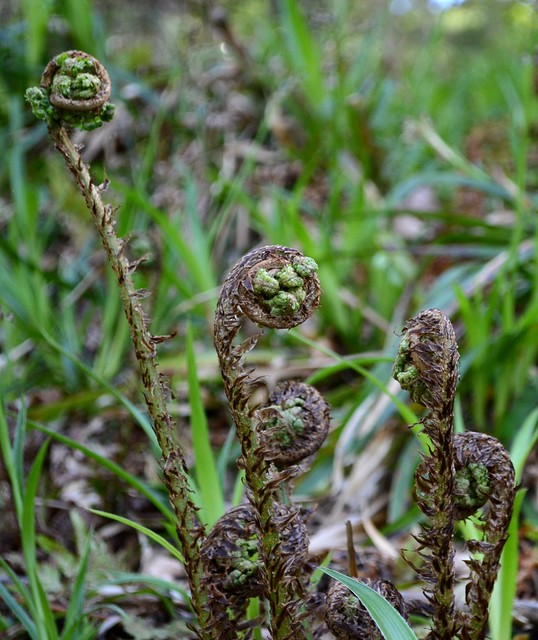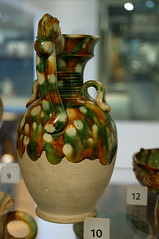The South Sea Bubble is one of the more famous early boom-bust financial scandals in Britain, in which a large number of people lost money & the government were thought to’ve been all too involved in the whole thing. The experts who talked about it on In Our Time were Anne Murphy (University of Hertfordshire), Helen Paul (University of Southampton) and Roey Sweet (University of Leicester).
They started the programme by setting the scene a little. The South Sea Company was set up in 1711, which is very early in the history of the financial stock market in London – which was only really set up in 1690s. Queen Anne was on the throne, and Britain was involved in the Spanish Succession War (attempting to prevent the French Bourbons from gaining the Spanish throne). War is expensive, and the government debt was rising – so the South Sea Company was set up to take on some of the government debt, and hopefully also make a profit (the model here would be the East India Company, which as we all know was spectacularly successful and gained a whole colony for Britain).
All three experts seemed sure that there was a chance for the Company to make a reasonable profit, it wasn’t an actual scam. It had a monopoly on British trade to South America – which was important politically because the Spanish controlled South America & so this played into the war efforts. They did in fact trade with South America. The Spanish never got a proper foothold in Africa, so they relied on other countries to provide them with African slaves to work in their colonies in South America, and the South Sea Company got one of these contracts (the war over the Spanish succession had Spanish on both sides, so that’s not as much of a surprise as one might think).
So the Company continued to finance the government debt, and make some profits, in a normal sort of fashion until 1720. And then a combination of factors all came together to make the prices of shares first rise stratospherically (from about £100 per share up to £1000 in a few months) and then crash back down. One of these factors was that companies were beginning to figure out how to advertise their shares to make them seem more attractive as investments thus drawing in ever more investors. And they were making it easier to buy those shares – you could pay in instalments, or get a loan from the Company itself which you paid back over a longer time (or with the profits you’d “inevitably” make  ). Another factor was the rumour spreading that the South Sea Company had “something big” in mind. And this big thing was that they were going to take on even more of the government debt. I admit to a blind spot about economics & how capitalism works – it always seems a confidence game to me, where it all just works because the economists believe it will – so I have to take it on faith that this would prompt investment. Or equally perhaps I’ve misunderstood this point 🙂
). Another factor was the rumour spreading that the South Sea Company had “something big” in mind. And this big thing was that they were going to take on even more of the government debt. I admit to a blind spot about economics & how capitalism works – it always seems a confidence game to me, where it all just works because the economists believe it will – so I have to take it on faith that this would prompt investment. Or equally perhaps I’ve misunderstood this point 🙂
As the share price began to rise, people started to make lots of money (on paper) and this fuelled the desire of other investors for shares in the Company (I do understand how that bit of economics works 🙂 ). Other companies began to spring up – some with sensible sounding ideas, some less so – and to take advantage of this desire to invest, a bit like the dot com bubble with all the little start ups. And here’s where the South Sea Company started to shoot itself in the foot – they actually got Parliament to pass a law restricting the setting up of these new joint-stock companies and that started to change the mood of the investors (I think that’s how it was a bad idea).
And then it went pop! The mood changed, and the price dropped, and a lot of people lost money – some of it money they’d not actually had in the first place. One of the reasons that it’s so famous is because for the first time it affected a large cross-section of society – including a lot of writers who wrote about it. And not just wealthy people – because of the loans-to-buy-shares thing there were quite a lot of less well off people who’d thought they were going to make their fortune, and now had lost even what they’d started with. However, the experts were unanimous in saying that actually it wasn’t as bad as one might think from the reports and the writing about it – it didn’t drive the whole country’s economy into recession (or not for long), and even the South Sea Company itself continued along for another hundred or so years making modest profits. And even some of the vocally upset people only lost money “on paper” – if you’d bought in before 1720 then your shares were worth around the same or a little more in 1721. Of course some people made a lot of money by selling out at the right time, but they tended to keep rather quieter about it. This (as they said a couple of times on the programme) was definitely a period of history that was written by the losers.
Suspiciously one of the people who made money on the deal was Walpole – a leading (Whig) politician (who wikipedia tells me was the first Prime Minister of Britain – it didn’t really exist as a role till around the 1720s). There was definitely government corruption involved in the setting up & running of the Company (the debt financing side of it) – the experts talked about bribery with the Company doing things like promising politicians shares which they then had an incentive for passing laws etc to raise the value of. The collapse of the bubble damaged the reputation of Walpole, the Whigs & even the King (George I was on the throne by this point). Although Walpole was still one of the premier politicians for another decade or two, at the time of the end of his political career satirical cartoons about his involvement in the South Sea Bubble were still being circulated.
I can’t remember which of the three experts it was, but one of them brought up the effect the bubble and its collapse had on wider perceptions of women & finance. Because of the opening up of share buying and the advertising and encouragement for new investors to join in there was a much more significant number of women as shareholders of the South Sea Company – as many as 20% of the investors were female. Some of these women did well – they mentioned a particular Duchess whose name I’ve forgotten who sold out at the right moment, then made even more money lending it to people who’d lost money. But at the time that this hysteria & mania for shares that lead to the boom & bust wasn’t really understandable – economists today know this is how markets work when you have these conditions, but at the time it was seen as irrational. And there was a perception at the time that it was in part due to letting silly, irrational women make financial decisions – that they’d followed some notion of “fashion” and that had lead to the bubble and to its bursting.
I think I’ve missed out loads they talked about on the programme – like there was a bit about the French financial market which collapsed a bit before the South Sea Bubble. All three experts & Bragg were definitely very enthusiastic & kept wandering off on to tangents and having to re-track to get back to the actual topic on hand.


